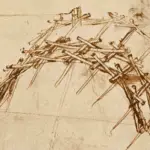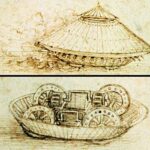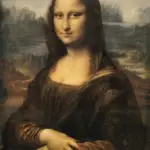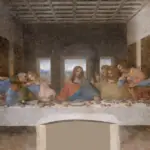Leonardo da Vinci Portrait of a Musician
Title: Portrait of a Musician
Year: c. 1483-1487
Size: 44.7 x 32 cm
Medium: Oil on panel
Location: Pinacoteca Ambrosiana, Milan, Italy
The Portrait of a Musician depicts a young man with wavy shoulder-length hair, wearing a red cap, and concentrating intently on something outside. His look is heightened by clever lighting that draws emphasis to his face, particularly his huge glassy eyes. He’s dressed in a tight white undershirt. His black doublet is unfinished, and his brownish-orange stole is barely partially painted.
The colors have faded, most likely as a result of modest repainting and inadequate care. The doublet was most likely originally dark red, and the stole was bright yellow, according to a technical inspection of the piece.
The man’s mouth suggests a smile or that he is about to or has just finished singing, the impression of the light beyond the frame of his eyes is a distinguishing aspect of his face. The light dilates the pupils of both eyes, but the proper right pupil dilates significantly more than the left, which is not conceivable. Some claim that this is purely for dramatic effect so that the audience perceives movement from the musician’s left to right side of his face.
Leonardo da Vinci Portrait of a Musician was created in oils and perhaps tempera on a small walnut wood panel measuring 44.7 x 32 cm. It represents a young man in a three-quarter view with a bust-length right hand. The painting is mostly incomplete, except for the face and hair, but it’s in decent shape overall, with only the bottom right corner damaged. According to art historian Kenneth Clark, the Musician is arguably the best conserved of Leonardo’s extant paintings, despite color diminishing over time.
History of the Portrait of a Musician
The Portrait of a Musician is a painting from the same era as Lady with an Ermine. If Leonardo did paint it, Portrait of a Musician would be his only portrait of a man, according to some. There is no documentation for this painting, and there is no record of anyone ever commissioning it. Despite being widely regarded as his least important work, fate has decreed that it be the best preserved.
Unfortunately, the identity of the sitter is still unknown today. The sheet of paper was not visible prior to restoration in the early twentieth century, and it was supposed it was a portrait of Ludovico Sforza himself. Initially, the main candidate was Sforza’s court musician, Franchinus Gaffurius (1451 to 1522). Because both men worked at Duke’s court and thus knew one other, this became a very believable theory.
Many people feel that the subject’s face is strained because he is in the middle of a performance. The painting has also been seen as a reflection of Leonardo’s self-induced idea of painting’s superiority over other creative forms like poetry and music. Leonardo famously claimed at the start of his unfinished Libro de pittura
Original painting of the Portrait of a Musician
Although the attribution of Leonardo’s Portrait of a Musician painting to him was contentious in prior centuries, current art historians consider it to be one of his original works. For virtually as long as the painting has been known, there have been doubts about its attribution to Leonardo. It was identified by Leonardo in a 1672 catalog for the Pinacoteca Ambrosiana, while a 1686 inventory of the collection assigned it to Bernardino Luini. This was shortly removed and replaced with or rather by Leonardo.
When it comes down to it, all we can say for certain about Portrait Of A Musician is what we see in front of our eyes: how, well Leonardo obviously understood the bone structure under the flesh, how free the pose is, the exquisitely wavy hair and graceful fingers that are so common in Leonardo’s work.
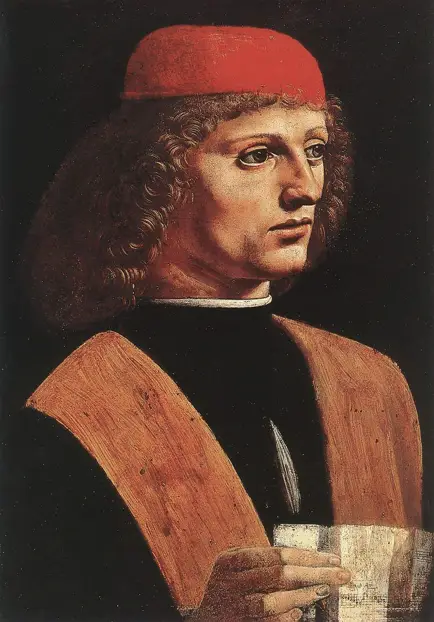
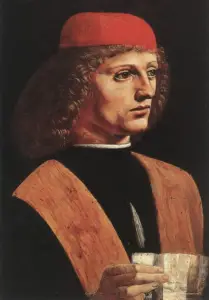
 I’m Leonardo Bianchi, the mind behind Leonardo da Vinci's Inventions. Thanks for visiting.
I’m Leonardo Bianchi, the mind behind Leonardo da Vinci's Inventions. Thanks for visiting. 